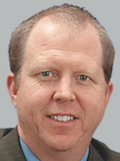Article
PQRS success challenging but doable for urologists


We are really struggling with the Physician Quality Reporting System (PQRS) codes. Our Medicare remittance is telling us 3016F is not a reportable code, but I have called and verified the code is billable. I also understand that we need to be reporting nine measures across three categories. Can you help clarify this?
Your question does not have a simple answer. We will try to break down the parts of the question into a few separate answers.
Also by the Painters - ICD-10 phase II: What you should be doing now
The first part of your question, in relation to code 3016F not being a reportable code, is confusing. In fact, 3016F is a valid code and can be used as part of reporting measure 173. However, based on your question, we can safely assume that you submitted this code on a claim. Measure 173 is not eligible for claims-based reporting but can only be reported via a registry. Therefore, the claim processing system will reject the code as it cannot be processed. The rejection notice is not very descriptive.
If you look under the PQRS measure section on the AUA Coding Today website (www.auacodingtoday.com), you can find all measures. Each measure will list in the body of the measure what methods are acceptable for reporting.
Have you read: Is modifier –22 an option for multiple stones?
Regarding the second part of your question: You are required to report at least nine individual measures across three National Quality Strategy domains, one of which must be a cross-cutting measure, or a single measures group. The issue we have seen with measures groups for urology is a lack of a measures group that truly fits the specialty. It can be done, but you will have to collect some information that is likely not in your process.
Next: Reporting methods
Reporting can be done using any of several methods; however, you will need to select your measures and method of reporting with the method of reporting in mind. Here are the methods you can choose from:
- Medicare Part B claims
- qualified PQRS registry
- direct electronic health record (EHR) using certified EHR technology (CEHRT)
- CEHRT via data submission vendor
- qualified clinical data registry.
Finally, once the method and measures are selected and matched, you will need to set up the practice actions, documentation, and reporting to meet the reporting requirements. In the end, PQRS is doable but it does require both planning and execution.
Also see - Today’s billing process: Follow these 11 steps
The AUA has a “PQRS Toolkit” online with resources including recommended urology measures and information on reporting options; see bit.ly/PQRStoolkit for more.
If you are still have difficulty with PQRS, resources like Physician Reimbursement Systems can provide in-depth assistance, but please contact us directly to discuss options.
Next: If a patient was referred to a subspecialist to only do the surgery and then returns to the local physician for the follow-up care, how is that coded?
If a patient was referred to a subspecialist to only do the surgery and then returns to the local physician for the follow-up care, how is that coded? The physicians are not in the same practice, but since there is a global period, how does that work?
Theoretically and the correct way to report from a coding standpoint, the "urologist specialist/surgeon" that is performing the procedure would append the 56-Preoperative Management Only and 54-Surgical Care Only modifiers to the procedure code.
Read - Four decades of billing, collections: How times have changed
The "local physician" would then submit the same procedure code and append the 55-Postoperative Management Only modifier. The carrier would then split up the overall value appropriately to the appropriate physicians. (Also see, “Modifier 54, 55, and 56 definitions.")
The "local physician" is basically purchasing (taking over) the postoperative care package and should be getting reimbursed up front for that portion of the procedure. Since the local physician has now purchased, or been paid for the postoperative care, that physician is also tied to any global period issues.
However, this requires cooperation among all the providers involved as well as prior knowledge and agreement on transfer of care among the providers involved. We have seen a few roadblocks in reporting the services provided correctly.
Also see: What to include in list of holmium laser codes
First is the agreement for transfer of care among the providers. Often, the operating physician does not wish to return care of the patient to another physician after the surgery has been completed and asks that the patient return for follow-up. In these cases, there is not agreed-upon transfer of care for follow-up. Therefore, each provider is left to report the services each provides separately, the surgeon reporting the surgical services without the modifiers and the local physician reporting services provided under evaluation/management codes without modifiers relative to the surgery provided.
Next: "The second common issue is that the providers do not communicate the intention to transfer care to billing staff."
The second common issue is that the providers do not communicate the intention to transfer care to billing staff. If the bill for the surgeon/specialist does not include the modifiers, the local provider billing, with a procedure code and the 55 modifier, will be denied as the global service will have been paid in full to the other.
Have you read: This trust may benefit special needs individuals
In either case, the lack of understanding for all involved is an issue that will interrupt payment. Most at this point will take the path of least resistance in coordination of care, reporting only the services each provides and ignoring the split billing required by the coding system. In this scenario, the local physician providing the postoperative care will charge for each service provided without a modifier.
Longer term, the payers will begin to recognize that they are overpaying for coordinated care. When coupled with the fact that changes in health care are increasing the number of cases that are treated with coordinated care, it is apparent that payers will eventually look into these cases. We would encourage you to consider all aspects of coordinated care when reporting these services.
A friend stated that you had made the statement at one of your seminars that I could charge based on time when I see a consult at the hospital. Is that true, and are there any restrictions?
Charging by time is an option only if you spend over 50% of the time in counseling or coordinating care. The good news is that in a facility setting, you can count total “floor time” as opposed to only counting face-to-face time in the office or other outpatient setting. That means you can count not only the time you spend discussing the patient’s options with the patient and the family, but also the time you spend discussing with the nurse or other physicians the care of the patient, scheduling surgery, etc. The documentation guidelines quoted below specifically state counseling or coordinating care must dominate the visit and that you must document the time spent and what was done:
“In the case where counseling and/or coordination of care dominates (more than 50%) of the physician/patient and/or family encounter (face-to-face time in the office or other outpatient setting or floor/unit time in the hospital or nursing facility), time is considered the key or controlling factor to qualify for a particular level of E/M services.”
Documentation Guideline: “If the physician elects to report the level of service based on counseling and/or coordination of care, the total length of time of the encounter (face-to-face or floor time, as appropriate) should be documented and the record should describe the counseling and/or activities to coordinate care.”
Recommended: What overpayments rule means for your practice
We have always recommended that you document the total time spent and include documentation clearly indicating that over 50% of the time was spent in counseling and/or coordinating care as well as documenting what was accomplished/discussed during the visit. Under these guidelines, you can use time to report inpatient services, when documentation supports the use of time and selection of the correct inpatient code is based on the floor time listed in the chart and rounded to the nearest time increment for the appropriate category and level of service.
Next: Modifier 54, 55, and 56 definitions
Modifier 54, 55, and 56 definitions
54-Surgical Care Only: When one physician performs a surgical procedure and another provides preoperative and/or postoperative management, surgical services may be identified by adding modifier 54 to the usual procedure number.
55-Postoperative Management Only: When one physician performs the postoperative management and another physician performs the surgical procedure, the postoperative component may be identified by adding modifier 55 to the usual procedure number.
56-Preoperative Management Only: When one physician performs the preoperative care and evaluation and another physician performs the surgical procedure, the preoperative component may be identified by adding modifier 56 to the usual procedure number.
More from Urology Times:
Buy and bill: Know the nuances, save your margins
Government clarifies PHI aspects of privacy rule
Can life insurance be used to pay estate taxes?
The information in this column is designed to be authoritative, and every effort has been made to ensure its accuracy at the time it was written. However, readers are encouraged to check with their individual carrier or private payers for updates and to confirm that this information conforms to their specific rules.
Subscribe to Urology Times to get monthly news from the leading news source for urologists.

















